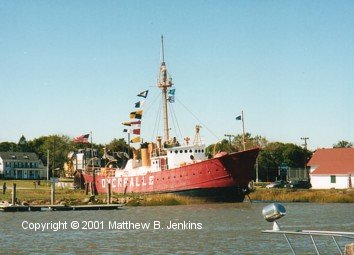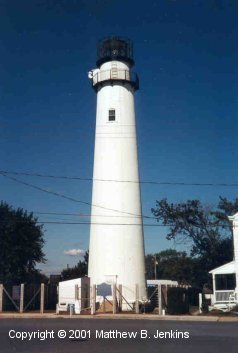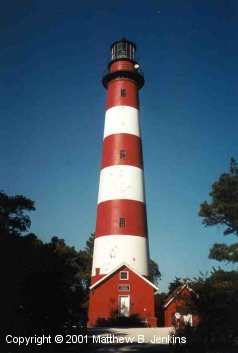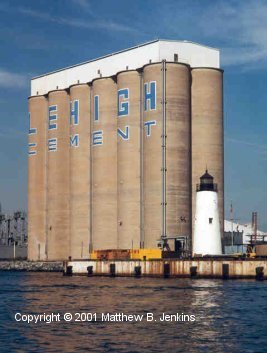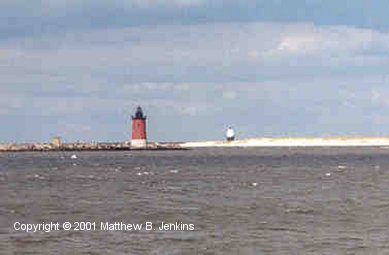
Delaware Breakwater & Harbor of Refuge (South) Breakwater Lighthouses
Off Cape Henlopen State Park, Lewes, DE
cir. 1885 and 1926
Construction of the breakwater at Cape Henlopen in Lewes, Delaware was authorized by Congress in 1825. This provided a place where ships could run for shelter and soon came to be known as "Harbor of Refuge". The second breakwater wall was built in 1892 to expand the harbor. An earlier tower lighthouse, the Cape Henlopen Light, had been built on shore in 1767. However, erosion took its toll and it had to be to be condemned, eventually collapsing in 1926. Given the commercial importance of the Delaware River and the exposed location of the Cape, a caisson light was selected to mark the the breakwater. The reddy-brown "Delaware Breakwater Light" was completed in 1885 and a fourth order Fresnel lens was exhibited. The tower stands 49 feet high. This light was deactivated in 1996. An earlier tower had originally been built in 1886 as the Southern Breakwater Light. However it was badly damaged by a storm in 1920 and had to be re-built. The white, iron plate, tower of the Harbor of Refuge (South) Breakwater Light that we see today was completed in 1926. This light stands 76 feet high and is still an active navigational aid. The Coast Guard restored the exterior of both lights in 1999.
